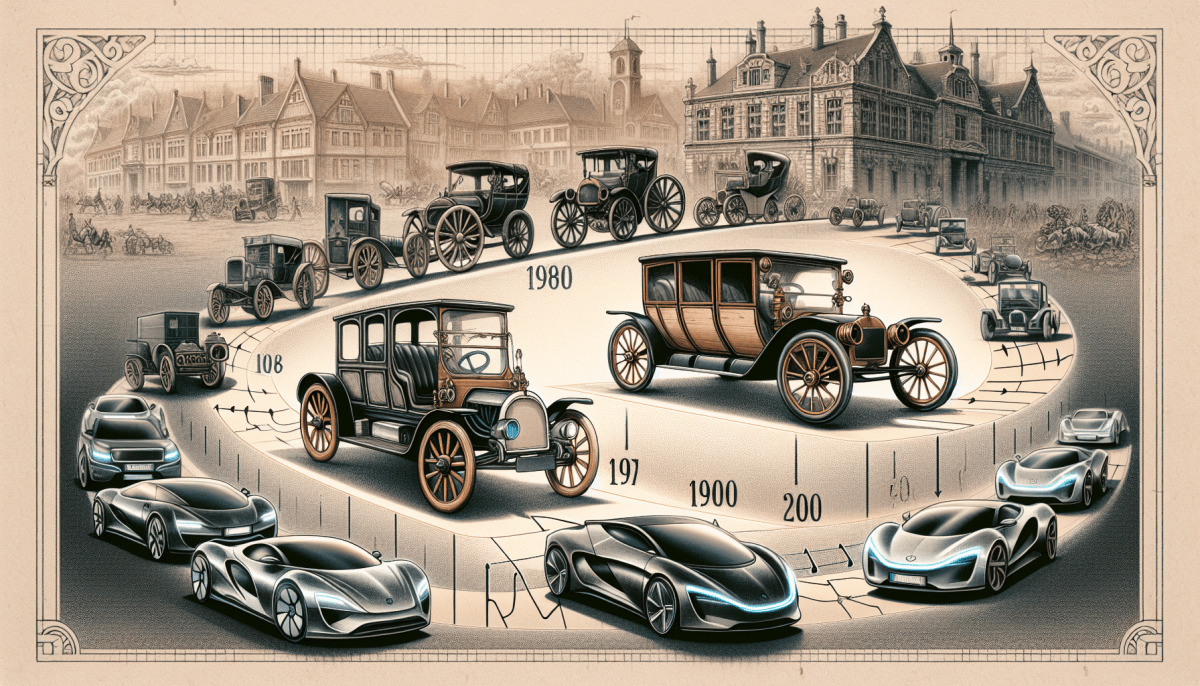Electric vehicles have come a long way since their early beginnings. Believe it or not, the first electric car hit the streets in the 1830s. Inventors were already tinkering with battery-powered vehicles long before gas engines became the norm. It wasn’t just a fad; people were seriously excited about these quiet, clean machines!
Fast forward to the late 1800s and early 1900s, and electric cars were all over the place. They were popular in towns because they didn’t smell like gas and were easy to drive. But then, things took a turn. The rise of gasoline-powered cars, especially with affordable models like the Model T, made it tough for electric vehicles to compete. By the 1920s, electric cars were fading away.
Decades rolled by without much buzz about electric cars until the oil crises of the 1970s brought them back into the spotlight. People started to care about fuel efficiency and dangerous emissions. Suddenly, the idea of going electric didn’t seem so crazy after all. However, it wasn’t until the late 1990s and early 2000s that we really saw noteworthy electric models back on the market, like the funky Toyota RAV4 EV.
Today, electric vehicles are cruising into the mainstream. With improvements in battery technology and growing interest in greener living, big names like Tesla led the charge. Now, we have a bunch of options from tons of manufacturers, plus charging stations popping up everywhere. The journey of electric vehicles is all about innovation and responding to our needs for a cleaner, smarter future.
How Electric Vehicles Work
Electric vehicles (EVs) work quite differently from traditional gas-powered cars, and that’s what makes them so interesting. At the heart of an EV is a big battery pack that stores energy. This energy powers an electric motor, which makes the car move. Think of it like having a giant rechargeable battery in your car!
When you plug in your EV to charge, you’re sending energy from the grid into that battery. Most charging happens at home or at public charging stations. Depending on the charger type and battery size, it might take a few hours to fully charge. But don't worry; many EVs can get enough juice in just 30 minutes to go for a long drive.
The electric motor is where the magic happens. Unlike engines that need fuel and a complicated system of parts, electric motors are much simpler. They use magnets and electromagnetic forces to create movement. This means EVs can accelerate quickly and smoothly, giving you a fun driving experience.
Many electric vehicles also come with regenerative braking. When you hit the brakes, instead of wasting that energy, the car recaptures some of it and sends it back to the battery. How cool is that? It makes driving an EV not just eco-friendly but also efficient.
Benefits of Driving Electric
Driving electric isn't just a trend; it's a smart choice for many reasons. First off, you’ll notice the savings on fuel. Electricity is often cheaper than gas, so you can spend less at the pump, and in some cases, you can even charge for free at certain locations. Who doesn't love saving money?
Then, there’s the environment. Electric vehicles produce zero tailpipe emissions, which means cleaner air for everyone. You can drive around knowing you’re making a positive impact on the planet. That’s a win-win!
Let's not forget about maintenance. Electric cars have fewer moving parts compared to traditional vehicles. That means less hassle when it comes to getting your car serviced. You won't be spending as much on oil changes or engine repairs, which is a major plus in the long run.
Also, you’ll love the driving experience. Electric vehicles are super quiet, offering a smooth and serene ride. They often come with instant torque, which means quick acceleration. You’ll enjoy the thrill of zipping around town without the noise and vibration of a gas engine.
Future Trends in Electric Vehicles
The future of electric vehicles (EVs) is looking bright and exciting. With technology advancing at lightning speed, we can expect some jaw-dropping trends coming our way. Imagine driving a car that knows where to charge itself and can even park without your help. That’s the kind of innovation on the horizon!
Battery technology is a massive game changer. We’re seeing breakthroughs that could boost range and cut charging time dramatically. Picture this: a battery that lasts for days on a single charge and refuels in minutes. Brands are racing to make this a reality, and it’s only a matter of time before we see these impressive improvements rolling out.
Then there's the rise of smart charging solutions. Whether you’re at home or on the go, these systems will help you find the best charging stations and even schedule your charging to take advantage of lower energy rates. This makes going green not just environmentally friendly but also wallet-friendly.
And let's not forget about the push for sustainability in EV production. More companies are focusing on using recycled materials and reducing their carbon footprint. That means every time you charge your electric car, you're making a positive impact on the planet.

